
These raw images were used to create an animation demonstrating the propeller-like rotation of Ultima Thule in the seven hours between 20:00 UT (3 p.m. ET) on December 31, 2018, and 05:01 UT (12:01 a.m.) on Jan. 1, 2019, as seen by the Long Range Reconnaissance Imager (LORRI) aboard NASA’s New Horizons. Credit: NASA/Johns Hopkins University Applied Physics Laboratory/Southwest Research Institute
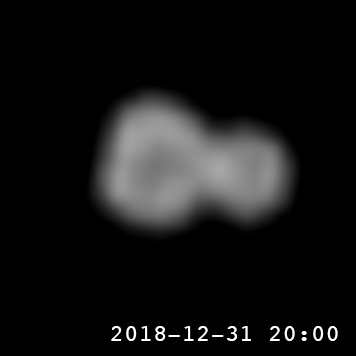
NASA/Johns Hopkins Applied Physics Laboratory/Southwest Research Institute/National Optical Astronomy Observatory
This movie shows the propeller-like rotation of Ultima Thule in the seven hours between 20:00 UT (3 p.m. ET) on December 31, 2018, and 05:01 UT (12:01 a.m.) on Jan. 1, 2019, as seen by the Long Range Reconnaissance Imager (LORRI) aboard NASA’s New Horizons as the spacecraft sped toward its close encounter with the Kuiper Belt object at 05:33 UT (12:33 a.m. ET) on Jan. 1.
During this deep-space photo shoot – part of the farthest planetary flyby in history – New Horizons’ range to Ultima Thule decreased from 310,000 miles (500,000 kilometers, farther than the distance from the Earth to the Moon) to just 17,100 miles (28,000 kilometers), during which the images became steadily larger and more detailed. The team processed two different image sequences; the bottom sequence shows the images at their original relative sizes, while the top corrects for the changing distance, so that Ultima Thule (officially named 2014 MU69) appears at constant size but becomes more detailed as the approach progresses.
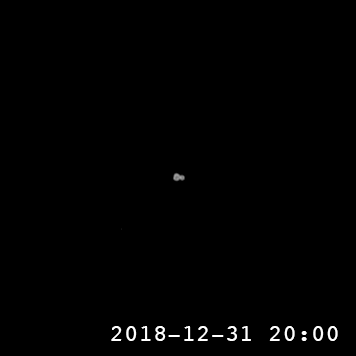
NASA/Johns Hopkins Applied Physics Laboratory/Southwest Research Institute/National Optical Astronomy Observatory
All the images have been sharpened using scientific techniques that enhance detail. The original image scale is 1.5 miles (2.5 kilometers) per pixel in the first frame, and 0.08 miles (0.14 kilometers) per pixel in the last frame. The rotation period of Ultima Thule is about 16 hours, so the movie covers a little under half a rotation. Among other things, the New Horizons science team will use these images to help determine the three-dimensional shape of Ultima Thule, in order to better understand its nature and origin.
The raw images included in the movie are available on the New Horizons LORRI website. New Horizons downlinked the two highest-resolution images in this movie immediately after the Jan. 1 flyby, but the more distant images were sent home on Jan. 12-14, after a week when New Horizons was too close to the Sun (from Earth’s point of view) for reliable communications. New Horizons will continue to transmit images – including its closest views of Ultima Thule – and data for the next many months.

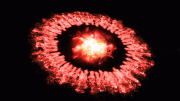


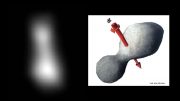



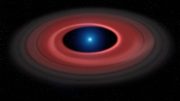
Yes, it’s great to watch these great science movies. Thank you for sharing it for me.
Science films are very valuable. Thanks for sharing
The movie is great.
Thank you so much, great post.
These precious friendship quotes are sure to get a smile out of your friend.
Thanks looking forward more.
Interesting.
It was interesting to read. Astronomy always was the field where i wanted to go. It’s interesting as much as difficult to understand and get into. I always watch news and discoveries in astronomy. Last time the most impressive was black hole photo.
Garena Free Fire is a battle royale game, developed by 111 Dots Studio and published by Garena for Android and iOS. It became the most downloaded mobile game globally in 2019.The game received the award for the “Best Popular Game” by the Google Play Store in 2019